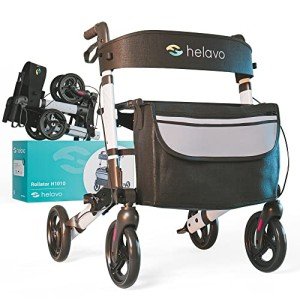15 Interesting Facts About Indoor Walker That You Never Known
The Comprehensive Guide to Indoor Walkers: Benefits, Features, and Recommendations
Indoor walkers, typically designed for security and ease of usage, are indispensable aids for people with mobility issues, seniors, or anybody recuperating from surgical treatment or injury. Click Link offer stability, support, and confidence, enabling users to keep an active lifestyle within the convenience of their homes. This blog site post looks into the numerous elements of indoor walkers, including their advantages, essential features, elements to think about when acquiring one, and a contrast of the top-rated models readily available in the market today.
Advantages of Using an Indoor Walker
Indoor walkers provide a multitude of advantages, from security to health improvement. Here are a few of the most considerable advantages:
Benefit
Description
Increased Stability
Supplies support to prevent falls, making it much safer to stroll.
Enhanced Mobility
Motivates higher movement throughout the home.
Enhanced Confidence
Users feel more secure, decreasing anxiety about moving.
Physical Rehabilitation
Aids in the recovery procedure for post-surgery clients.
Much better Posture
Promotes appropriate body alignment while walking.
Social Interaction
Allows users to engage more with family and visitors.
Adjustable Features
Lots of designs deal with customized requirements such as height changes.
Key Features of Indoor Walkers
When picking an indoor walker, it is necessary to evaluate its features to ensure it meets the user's particular requirements. Here are some features to think about:
- Adjustable Height: Ensures that the walker fits the user's body size for optimal convenience.
- Foldability: Many walkers can be folded for easy storage and transport, making them practical for those who may take a trip.
- Weight Capacity: Check the maximum weight the walker can support to ensure use.
- Design Options: Options may include traditional walkers, rolling walkers with wheels, or specialized models for included functionality.
- Hand Grips: Ergonomic grips help offer convenience and lower the danger of slipping.
- Brakes: A reliable braking system is crucial for safety when utilizing rolling walkers.
- Additional Accessories: Features like storage baskets or trays can be advantageous for carrying individual products.
Aspects to Consider When Purchasing an Indoor Walker
Choosing the right indoor walker can substantially impact the user's mobility and quality of life. Here are some elements to remember:
1. User's Condition
- Assess the mobility constraints or recovery requirements of the user.
2. Kind of Walker
- Determine whether a basic walker or a rolling walker is better suited based on the user's ability to raise the walker or the need for mobility as they walk.
3. Home Environment
- Consider the space in the home where the walker will be utilized. Is there enough space to maneuver through doorways and narrow corridors?
4. Personal Preference
- Aesthetic appeals and color can matter as users might feel more comfortable utilizing a walker that they discover aesthetically appealing.
5. Upkeep
- Think about the upkeep and toughness of the walker. Some products require more upkeep than others.
6. Cost Point
- Indoor walkers can differ considerably in cost. Identify a spending plan that fulfills both quality and affordability.
Top Indoor Walkers: A Comparison
The marketplace features various indoor walkers designed to deal with various needs. Below is a relative table showcasing a few of the best indoor walkers currently available.
Walker Model
Type
Weight Capacity
Adjustable Height
Foldable
Cost Range
Medline Heavy Duty Walker
Standard Walkers
Approximately 400 lbs
Yes
Yes
₤ 50 – ₤ 70
Drive Medical Rollator
Rolling Walker
Up to 300 lbs
Yes
Yes
₤ 70 – ₤ 100
Hugo Mobility Walker
Rolling Walker
Up to 250 pounds
Yes
Yes
₤ 60 – ₤ 90
Nova Medical Walker
Requirement Walkers
Up to 300 lbs
Yes
Yes
₤ 85 – ₤ 120
Zler Folding Walker
Requirement Walkers
As much as 300 pounds
Yes
Yes
₤ 40 – ₤ 70
Often Asked Questions (FAQ)
1. Do indoor walkers have a weight limitation?
Yes, most indoor walkers have actually a defined weight capability. It is necessary to select a walker that can support the user's weight for safety.
2. Can a walker be used outdoors?
While indoor walkers can in some cases be used outdoors, it's recommended to use walkers specifically created for outdoor use, which may use much better stability and balance on unequal surfaces.
3. How do I figure out the appropriate height for my walker?
The proper height for a walker is usually waist-high when the user is standing. Users need to be able to maintain a natural posture while holding the walker.
4. How do I clean and keep my indoor walker?
Frequently clean down the walker with a moist fabric and moderate detergent. Inspect the brakes, wheels, and any moving parts to guarantee they are operating correctly.
5. How can I improve my convenience while utilizing a walker?
Think about using grips with extra padding or using encouraging shoes. It's important to change the height of the walker to avoid strain on the back and arms.
Indoor walkers act as vital tools for boosting mobility, safety, and independence for individuals with mobility difficulties. With different models to pick from, it is essential to think about factors such as the user's particular needs, the home environment, and the walker's features. By picking the best indoor walker, users can enhance their lifestyle, keep their independence, and continue engaging in daily activities with confidence.
